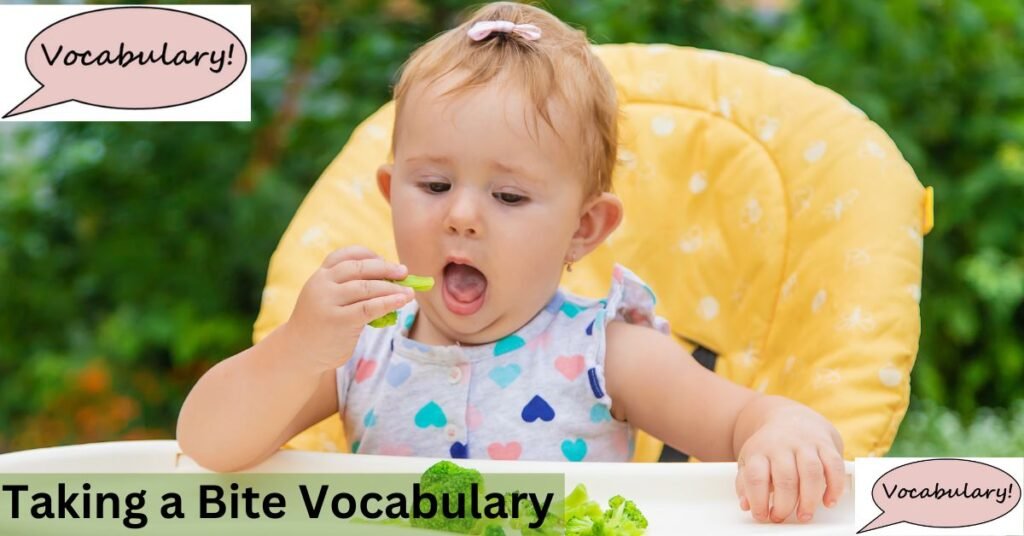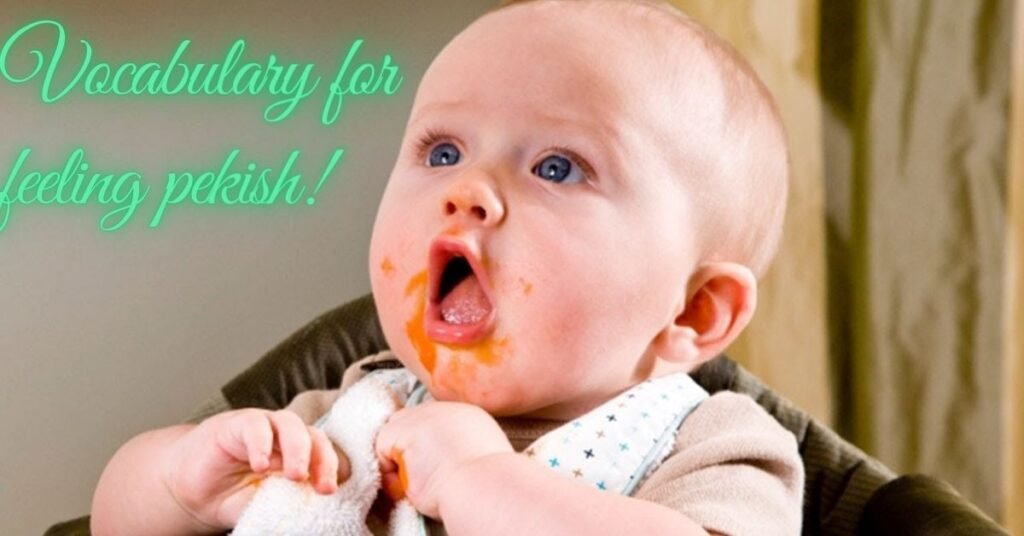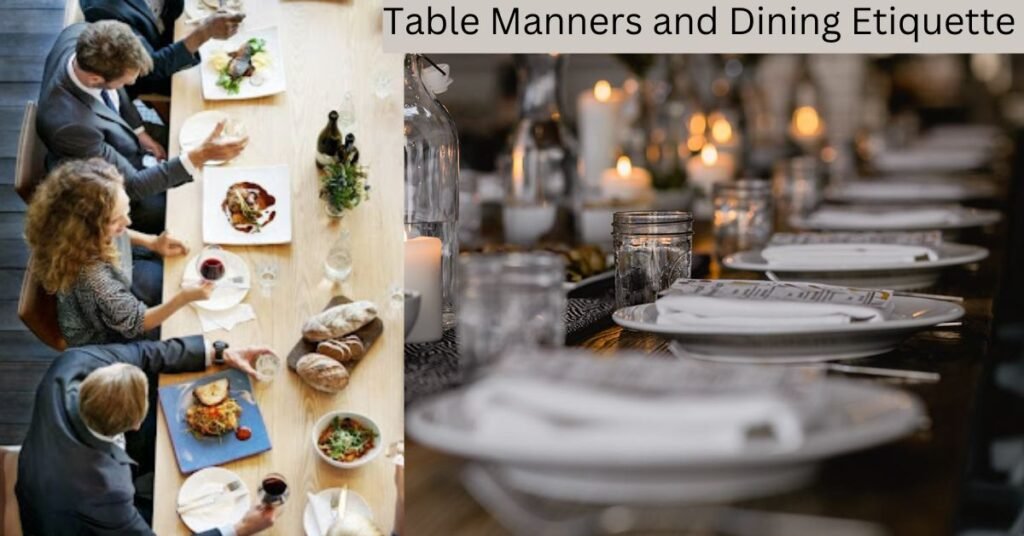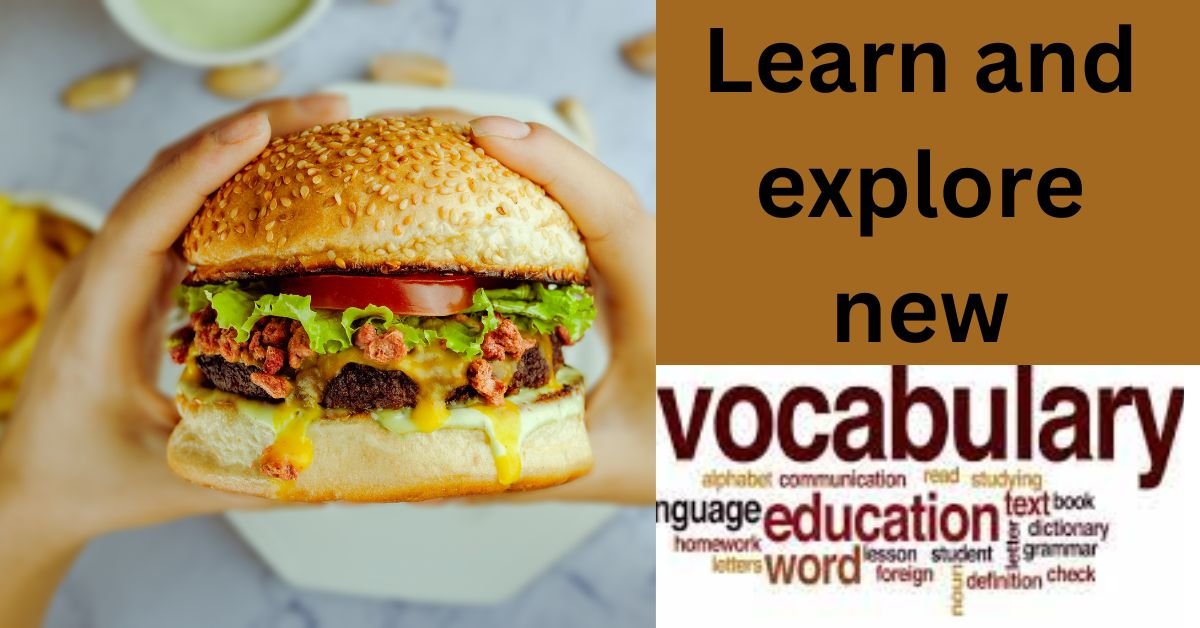welcome to the post Vocabulary for Eating. In this post, you will learn all about different words related to eating with a situation.
Vocabulary for Eating: From Bite to Bon Appetite!
Food is a universal language, but describing it can be surprisingly tricky! Expanding your Vocabulary for Eating unlocks a world of flavor beyond basic terms like “good” or “bad.” Whether you’re discussing the preparation methods in a recipe, describing the taste of a new dish, or simply expressing your hunger level, having a rich Vocabulary for Eating elevates your culinary conversations and allows you to fully appreciate the art of food. Let’s delve into some essential words and phrases that will take your vocabulary for eating to the next level!
This post dives into essential words to describe the act of eating, the state of hunger, and even the different ways we prepare food. Let’s start our journey to learning Vocabulary for Eating.

Taking a Bite:
- Bite (verb):
To cut or tear off a small piece of food with your teeth.
Example: “I took a cautious bite of the chili, unsure of its spiciness.”
- Chew (verb):
To grind food with your teeth to break it down before swallowing.
Example: “Chew your food thoroughly for better digestion.”
- Nibble (verb):
To eat small pieces of food slowly, often in a delicate way.
Example: “The squirrel nibbled on the nuts, storing some for later.”
- Gulp (verb):
To swallow a large amount of liquid or food quickly, often due to hunger or thirst.
Example: “He gulped down a glass of water after the long run.”
- Swallow (verb):
To move food or liquid from the mouth to the stomach through the throat.
Example: “Swallow slowly to avoid choking.”

Feeling Peckish?
- Hungry (adjective):
Having a strong desire to eat because you haven’t eaten in a while.
Example: “My stomach was growling – I was starving hungry!”
- Starving (adjective):
Extremely hungry, often to the point of feeling weak or faint.
Example: “After getting lost in the woods for hours, we were starving when we finally found food.”
- Peckish (adjective):
Slightly hungry, wanting a small amount of food.
Example: “I’m feeling a bit peckish after that long meeting, maybe a snack is in order?”

A Culinary Adventure:
- Boil (verb):
To cook food in boiling water.
Example: “Boil the potatoes for 15 minutes until tender.”
- Fry (verb):
To cook food in hot oil or fat.
Example: “Fry the onions until golden brown before adding the meat.”
- Grill (verb):
To cook food over direct heat, often on a metal grate.
Example: “Grilled vegetables are a healthy and delicious side dish.”
- Bake (verb):
To cook food in a closed oven with dry heat.
Example: “Preheat the oven to bake a delicious cake.”
- Simmer (verb):
To cook food slowly in liquid just below boiling.
Example: “Simmer the stew for a few hours for the flavors to develop.”
- Bon appétit! (French): Enjoy your meal!

Describing Taste and Texture:
- Savory (adjective):
Having a pleasant salty taste, is often associated with meaty or brothy dishes.
Example: “The savory mushroom soup warmed me up on a cold day.”
- Tangy (adjective):
Having a sharp, slightly sour taste.
Example: “The tangy vinaigrette dressing perfectly complemented the salad.”
- Creamy (adjective):
Having a smooth, rich, and slightly fatty texture.
Example: “The creamy mashed potatoes melted in my mouth.”
- Crispy (adjective):
Dry, firm, and brittle with a pleasant cracking sound when bitten.
Example: “The crispy fried chicken had a juicy and flavorful interior.”
- Succulent (adjective):
Moist, tender, and full of flavor.
Example: “The perfectly grilled steak was succulent and cooked to perfection.”

Table Manners and Dining Etiquette:
- Devour (verb):
To eat food quickly and eagerly.
Example: “We devoured the delicious pizza after a long hike.” (Use with caution, it can also imply eating something impolitely)
- Savor (verb):
To enjoy the taste and smell of food slowly and with appreciation.
Example: “Savor each bite of this gourmet chocolate cake!”
- Etiquette (noun):
The customary code of polite behavior at meals, especially in formal settings.
Example: “Brush up on your dining etiquette before attending the important business dinner.”

Deeper Dives:
- Gourmet (adjective):
High-quality food prepared in a sophisticated way, is often associated with fine dining.
Example: “We treated ourselves to a gourmet meal at a Michelin-starred restaurant.”
- Cuisine (noun):
The style of cooking characteristic of a particular country or region.
Example: “I love exploring the rich flavors of Thai cuisine.”
- Palate (noun):
A person’s ability to taste and appreciate different flavors.
Example: “The chef has a refined palate and creates dishes with complex flavor profiles.”
Conclusion
In conclusion, a strong Vocabulary for Eating opens doors to a more enjoyable and informed dining experience. By expanding your vocabulary for eating, you can describe flavors and textures with precision, ask insightful questions at restaurants, and confidently navigate international cuisines. Mastering this vocabulary for eating empowers you to discuss food choices with friends and family, fostering a deeper appreciation for the culinary world around you. So, delve into the world of food terminology, and watch your meals become richer and more meaningful experiences.
Request
Kindly leave comments to help our website, so we can make more and more beneficial posts.










Hi there,
My name is Mike from Monkey Digital,
Allow me to present to you a lifetime revenue opportunity of 35%
That’s right, you can earn 35% of every order made by your affiliate for life.
Simply register with us, generate your affiliate links, and incorporate them on your website, and you are done. It takes only 5 minutes to set up everything, and the payouts are sent each month.
Click here to enroll with us today:
https://www.monkeydigital.org/affiliate-dashboard/
Think about it,
Every website owner requires the use of search engine optimization (SEO) for their website. This endeavor holds significant potential for both parties involved.
Thanks and regards
Mike Page
Monkey Digital
It is perfect time to make some plans for the long run and it’s time to be happy. I have read this put up and if I could I desire to recommend you some fascinating things or tips. Perhaps you could write next articles referring to this article. I want to read more things about it!
I have been surfing on-line more than three hours today, yet I never found any interesting article like yours. It is beautiful price enough for me. In my view, if all website owners and bloggers made just right content as you did, the web will probably be much more helpful than ever before.
WONDERFUL Post.thanks for share..more wait .. …
I as well as my guys were examining the best recommendations found on your website and so quickly came up with a terrible feeling I never expressed respect to the blog owner for those strategies. My men had been as a result warmed to see them and already have clearly been taking pleasure in these things. Appreciate your indeed being so thoughtful and for utilizing variety of awesome issues most people are really needing to learn about. My honest regret for not saying thanks to earlier.
so much great info on here, : D.
Hello there! I could have sworn I’ve been to this website before but after browsing through some of the post I realized it’s new to me. Nonetheless, I’m definitely happy I found it and I’ll be bookmarking and checking back frequently!
I have learned result-oriented things via your website. One other thing I would really like to say is that often newer laptop or computer os’s tend to allow additional memory to use, but they likewise demand more ram simply to function. If an individual’s computer cannot handle a lot more memory as well as the newest software package requires that storage increase, it usually is the time to shop for a new Computer. Thanks
Definitely, what a great blog and informative posts, I surely will bookmark your blog.Have an awsome day!
Hey there! Would you mind if I share your blog with my myspace group? There’s a lot of folks that I think would really appreciate your content. Please let me know. Many thanks
hello!,I like your writing so much! share we communicate more about your post on AOL? I require a specialist on this area to solve my problem. May be that’s you! Looking forward to see you.
I do consider all of the ideas you have presented on your post. They are really convincing and can certainly work. Nonetheless, the posts are too quick for starters. May just you please extend them a little from subsequent time? Thanks for the post.
There are some attention-grabbing deadlines in this article however I don’t know if I see all of them middle to heart. There may be some validity however I will take hold opinion until I look into it further. Good article , thanks and we wish extra! Added to FeedBurner as nicely
The other day, while I was at work, my sister stole my apple ipad and tested to see if it can survive a 30 foot drop, just so she can be a youtube sensation. My iPad is now broken and she has 83 views. I know this is totally off topic but I had to share it with someone!
I have mastered some new items from your web page about computers. Another thing I’ve always imagined is that computers have become an item that each residence must have for many people reasons. They supply you with convenient ways to organize households, pay bills, search for information, study, pay attention to music and even watch shows. An innovative approach to complete most of these tasks is to use a notebook. These computer systems are mobile, small, potent and lightweight.
I do like the way you have presented this difficulty and it does present me personally some fodder for thought. Nonetheless, because of just what I have witnessed, I basically hope as the feed-back pack on that people keep on point and don’t get started on a soap box involving some other news du jour. Anyway, thank you for this fantastic piece and though I can not really concur with the idea in totality, I regard your point of view.
Thanks for the sensible critique. Me and my neighbor were just preparing to do some research about this. We got a grab a book from our local library but I think I learned more from this post. I’m very glad to see such magnificent information being shared freely out there.
Excellent website. Lots of useful info here. I’m sending it to some friends ans also sharing in delicious. And obviously, thanks in your effort!
Thank you sharing these wonderful posts. In addition, an excellent travel and medical insurance strategy can often eliminate those worries that come with vacationing abroad. A new medical crisis can rapidly become too expensive and that’s sure to quickly impose a financial load on the family finances. Having in place the excellent travel insurance program prior to setting off is worth the time and effort. Cheers
I think other site proprietors should take this site as an model, very clean and wonderful user friendly style and design, let alone the content. You are an expert in this topic!
I loved up to you’ll receive carried out proper here. The cartoon is tasteful, your authored subject matter stylish. however, you command get bought an shakiness over that you wish be delivering the following. sick surely come more previously again as exactly the similar just about a lot incessantly within case you shield this hike.
Thanks for the ideas you are discussing on this blog. Another thing I would like to say is that often getting hold of copies of your credit history in order to examine accuracy of each and every detail could be the first measures you have to execute in credit improvement. You are looking to cleanse your credit report from destructive details flaws that ruin your credit score.
I will immediately grab your rss as I can not find your email subscription link or newsletter service. Do you have any? Please let me know in order that I could subscribe. Thanks.
I’m not that much of a internet reader to be honest but your sites really nice, keep it up! I’ll go ahead and bookmark your site to come back down the road. All the best
Hi there would you mind letting me know which webhost you’re utilizing? I’ve loaded your blog in 3 different internet browsers and I must say this blog loads a lot quicker then most. Can you suggest a good web hosting provider at a reasonable price? Kudos, I appreciate it!
Fantastic site. Plenty of useful info here. I am sending it to a few friends ans also sharing in delicious. And naturally, thanks for your sweat!
With havin so much content and articles do you ever run into any problems of plagorism or copyright infringement? My website has a lot of exclusive content I’ve either written myself or outsourced but it appears a lot of it is popping it up all over the internet without my agreement. Do you know any ways to help reduce content from being ripped off? I’d certainly appreciate it.
Today, considering the fast life style that everyone is having, credit cards get this amazing demand in the economy. Persons coming from every field are using credit card and people who not using the credit cards have made up their minds to apply for 1. Thanks for spreading your ideas in credit cards.
I have been exploring for a little bit for any high-quality articles or weblog posts on this sort of area . Exploring in Yahoo I ultimately stumbled upon this website. Studying this info So i am happy to exhibit that I’ve a very good uncanny feeling I discovered exactly what I needed. I such a lot indubitably will make certain to do not forget this website and give it a look on a continuing basis.
Thank you for every other informative site. Where else may I get that kind of information written in such a perfect method? I have a challenge that I am simply now operating on, and I’ve been on the look out for such information.
There are actually lots of details like that to take into consideration. That could be a great point to bring up. I offer the thoughts above as basic inspiration however clearly there are questions just like the one you convey up the place the most important thing will likely be working in trustworthy good faith. I don?t know if best practices have emerged around issues like that, however I’m positive that your job is clearly identified as a good game. Each girls and boys feel the impression of just a second’s pleasure, for the rest of their lives.
I do agree with all the ideas you’ve presented in your post. They’re very convincing and will definitely work. Still, the posts are very short for newbies. Could you please extend them a little from next time? Thanks for the post.
It is actually a great and helpful piece of info. I am satisfied that you simply shared this helpful information with us. Please stay us informed like this. Thank you for sharing.
Wonderful items from you, man. I’ve take into accout your stuff previous to and you are just extremely great. I really like what you’ve acquired right here, certainly like what you’re saying and the best way in which you say it. You make it enjoyable and you continue to care for to keep it wise. I cant wait to learn far more from you. That is really a great web site.
I like what you guys are usually up too. This sort of clever work and coverage! Keep up the very good works guys I’ve included you guys to my personal blogroll.
I am glad to be one of several visitants on this great web site (:, thankyou for putting up.
After examine a few of the blog posts on your web site now, and I actually like your way of blogging. I bookmarked it to my bookmark web site listing and will probably be checking again soon. Pls check out my website as effectively and let me know what you think.
would love to perpetually get updated great web blog! .
Just wish to say your article is as surprising. The clarity in your post is just excellent and i could assume you’re an expert on this subject. Well with your permission allow me to grab your feed to keep up to date with forthcoming post. Thanks a million and please continue the enjoyable work.